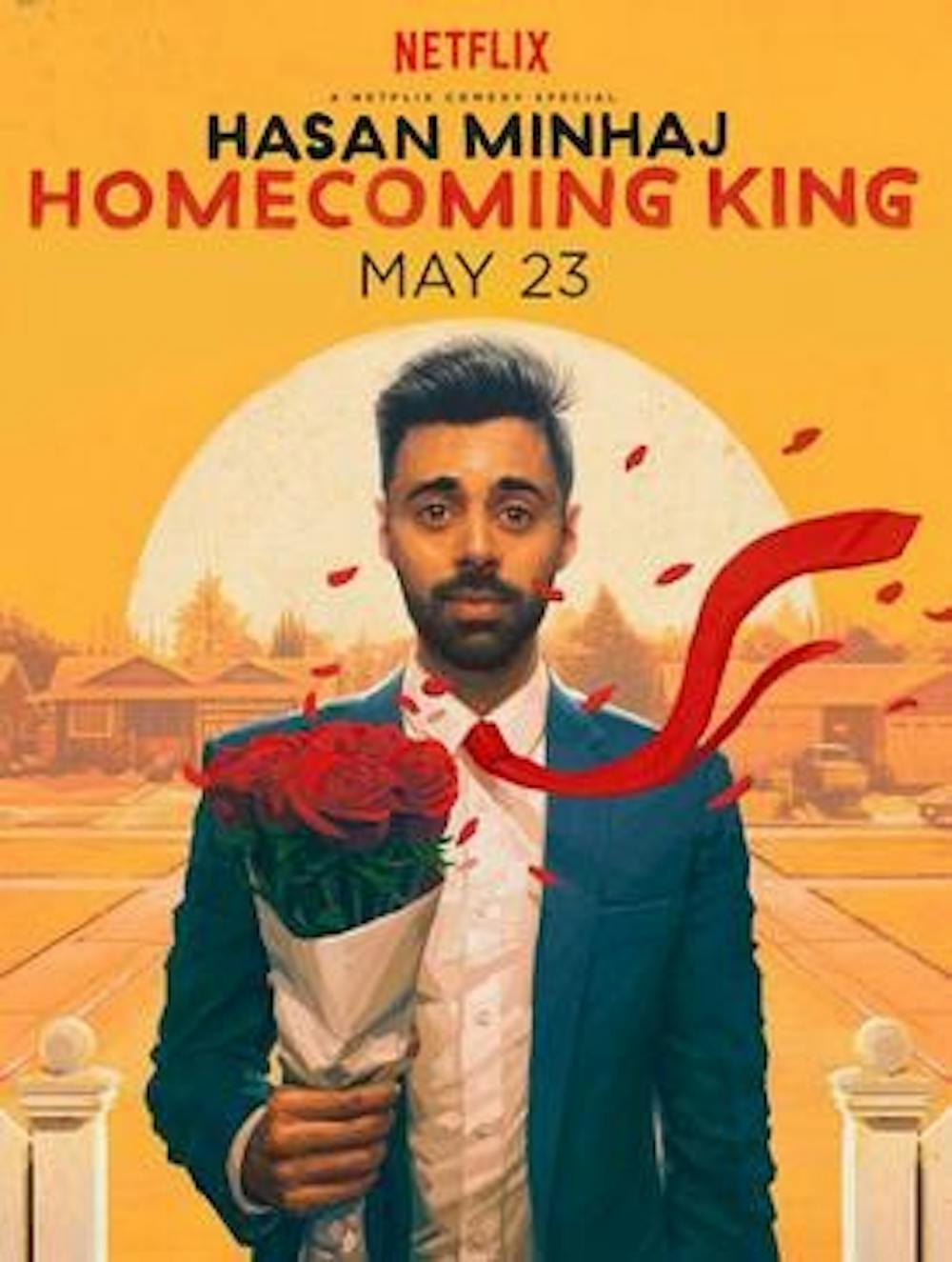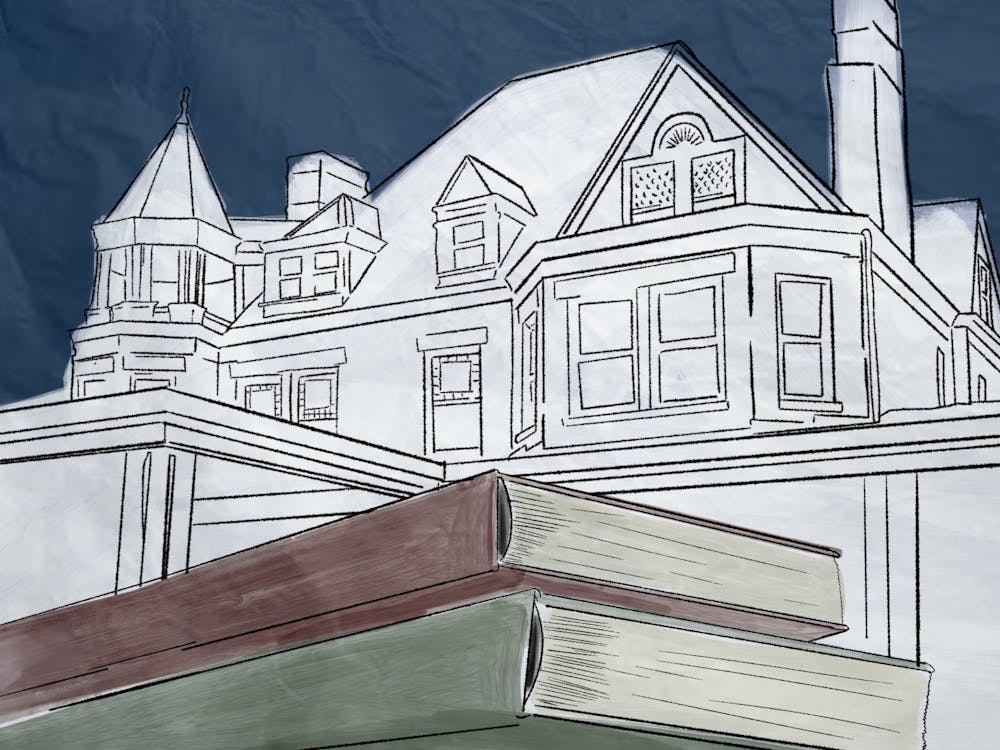Around the halfway mark of comedian Hasan Minhaj’s first stand-up special, “Homecoming King,” which debuted May 23 on Netflix, he provides the show’s modus operandi — “I actually have the audacity of equality.”
His remark alluded to his family’s immediate post-9/11 reality, particularly the difference between his father’s and his own reactions to it. The elder Minhaj considers himself lucky to live in America where race-based threats, violence and fear are worth the American Dream. Minhaj refers to this mindset as the “American dream tax.”
The “audacity” underscoring the entirety of the Minhaj’s special contemplates and protests his father’s resignation. He describes the relationship between he and his father as constituting two sides of the same coin — two men of color with different views regarding the American Dream, love, the purpose of life and education.
“Homecoming King” grapples with the same question Minhaj referenced in a recent interview with GQ — “Are we the nativist narrative, or are we the immigrant narrative?” His special, he says, “is an ode to the latter.” For Minhaj, it is the medium through which he contributes to the discourse surrounding race in America.
As the name of the special suggests, the central theme of Minhaj’s story is told through his experiences in his hometown of Davis — a predominantly white city in Northern California where he felt lucky to be born despite being perpetually subjected to a racial identity crisis.
In that same interview, Minhaj expanded upon the significance of “branching out into the comedic storytelling community … Where there would be these entire shows dedicated to a central theme or a topic.” “Homecoming King” is clearly influenced by — and hinges upon — Minhaj’s experiences. He conveys pointed and important material but does so light-heartedly. To watch Minhaj perform is to converse with him, to hear him tell stories while understanding his sporadic, contradictory thoughts informing them. Minhaj is a skilled-enough storyteller in his own right to pull off this confluence, but central to the feel of the show are its strong visual accompaniments.
Images displayed on a giant screen accentuate Minhaj’s stories, and the stage’s backlighting adjusts with the mood of the performance. For instance, Minhaj tells stories about his immigrant sister — whom he initially ignores to garner favor from his white classmates — and how she stood up for his right to love anyone regardless of religion. Minhaj punches home the story with a projected photo of the two of them, which fades out to uproarious applause.
A map of Aligarh — the city in India where Minhaj’s parents both grew up — and a fake Tinder profile of his mother appear behind Minhaj as he tells of his parents’ blind marriage. The crowd coos at a photo of Minhaj and his father, and Minhaj responds by cutting the legs out from under them with a joke about his dad’s conditional love.
The story of his relationship with Bethany Reed — a high school classmate of his — and her family, whose casual racism eventually breaks his heart, comes with screenshotted Tweets and Facebook posts. He acts out their rendezvous behind scene-setting graphics, while backlit colors render a particularly hilarious story of their Manhattan meeting.
“Homecoming King” is reminiscent of Bo Burnham’s “Make Happy” in that both shows revolve around a complicated issue while holding seriousness at arm’s length. In this way, both shows appear more conversational and relatable without sacrificing impact. They offer the chance for a dialectic to emerge, which contests the point they attempt to make. Burnham consistently grapples with the point of his show entirely, while Minhaj admits he is unsure if it is himself or his father whose mindset is more correct.
Both Minhaj and Burnham have engineered a different type of performance deviating from traditional stand-up comedy. While the impact of stand-up comedy is strengthened by the comic’s ability to navigate complex topics with a humorous bent, it can sometimes be blunted by the limited tools at their disposal. Even the most brilliant of stand-up comics can appear didactic without letting the air out of the building.
Consider the view from 2014 in Ian Crouch’s New Yorker piece entitled “Is Social Media Ruining Comedy?”. Crouch considers how an audience member must reconcile competing impulses to simultaneously laugh at vulgar humor and feel repulsed by its actual meaning. He documents Bill Burr’s appearance on Jerry Seinfeld’s “Comedians in Cars Getting Coffee,” where Burr is asked whether people can be funny anymore in a culture becoming increasingly respectful.
“The hostility between comedians and audiences has long been central to comedy,” Crouch writes, “but the nature of that relationship is changing now that technology has knocked down the walls of the comedy club.” Crouch is right, and as relative newcomers in the scene, Minhaj and Burnham are in tune with this new nature. While Minhaj abides by the conventional stand-up model at times, he is far more comfortable wading into testy material — where the real meat of his special resides — as he unleashes the totality of his show’s visual component.
Minhaj discusses the differences between Hindus and Muslims, whom he calls “the Montagues and Capulets of India.” A T-table appears on the giant screen behind Minhaj, filling up in real-time as he lists their differences. With a topic so contentious, this reliance on graphics leaves none of Minhaj’s words up to interpretation. It forces simplification, and the bit ends up all the more humorous.
Of course, traditional stand-up comedy has by no means gone the way of the dinosaur. Louis C.K. and Norm Macdonald, both mainstays of the conventional model, have each submitted fantastic stand-up this year. Meanwhile, younger comics like Jerrod Carmichael and Michael Che present refreshing new material from different perspectives.
However, in an era where social and cultural commentary is laser-focused on intent, true meaning and political correctness — areas where stand-up comics can seldom find worthwhile humor — perhaps the model followed by Minhaj and Burnham points to a way out of the complicated morass between comics and their audience.





